|
THE FAIRFORD BRANCH LINE |
|
|
|
THE LAST DAY - 16 JUNE 1962 |
|
The line closed to passengers on 16 June 1962, with the Witney to Fairford section being closed completely, and the Yarnton to Witney section retained for freight traffic. As with so many branch line closures that happened around this time, there was
ironically a celebration atmosphere, with totally uncharacteristic crowds on every train.
|
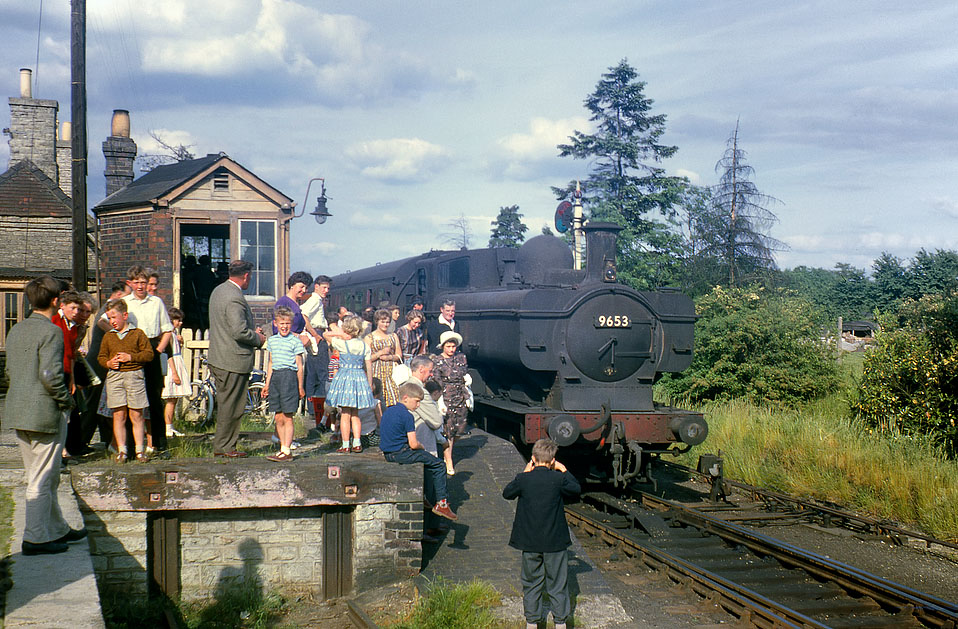 |
|
A superb quality Kodachrome slide showing the crowds at Fairford on the last day of passenger services - 16 June 1962. Even without any caption details it is easy to identify this as the last day, due to the presence of such a large crowd! Confirmation of the date in this
case is guaranteed, as my brother is in the foreground taking a picture of 57xx 0-6-0PT 9653, and my father can be seen by the side of the loco. I must be in the crowd somewhere, but being only five years old, I am probably hidden. As we only ever went to Fairford once, this is definitely
16 June 1962!
Martin Loader Collection
|
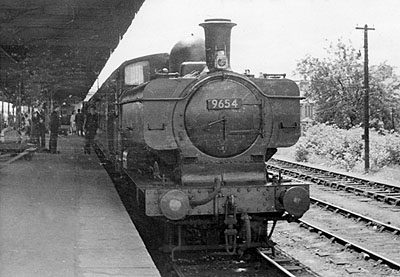
|
57xx 0-6-0PT 9654 in the down bay platform at Oxford with the 12:44 service to Fairford on 16 June 1962. The last day crowds are particularly evident here, but this is yet another picture of 9654 taken on the final day. The loco was
probably photographed more often on this day, than during most of the rest of its career!
Martin Loader Collection
|
 |
|
Passengers on the evening train from Fairford hang out of the windows, as the train calls at South Leigh on the final day. As at most stations, some locals have come out to witness the end of an era. Note the grass taking over the platforms.
Standards of maintenance had slipped in the later years.
Martin Loader Collection
|
|
Crowds gather on the down platform on the last day of passenger services, 16 June 1962. If only the line had been this well patronised normally things might have been very
different, then again possibly not given the political climate of the day. When looking at this and the similar view above, it becomes obvious that while the station was only a short walk from the town centre, it was
still largely surrounded by fields.
Witney & District Museum
|
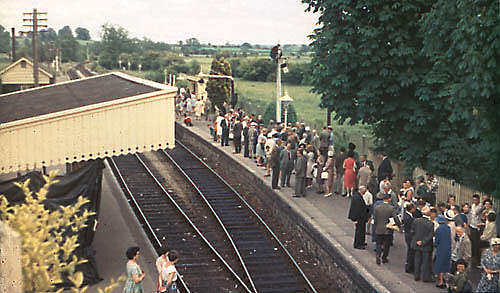
|
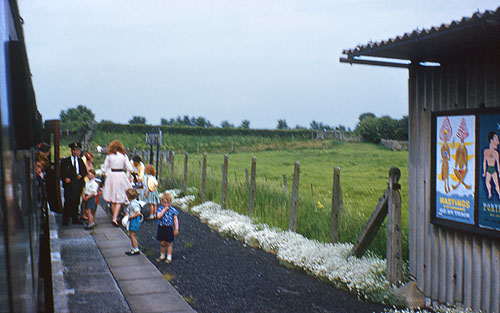 |
Carterton station's down platform, viewed from the train on the final day of passenger service - 16 June 1962. The poster advertising the delights of Hastings on the side of the waiting shelter is not going to be of much use in the future!
This view also shows just how rural Carterton station was, being nowhere near Carterton, and with only a few of Black Bourton's outlying houses nearby.
Martin Loader Collection |
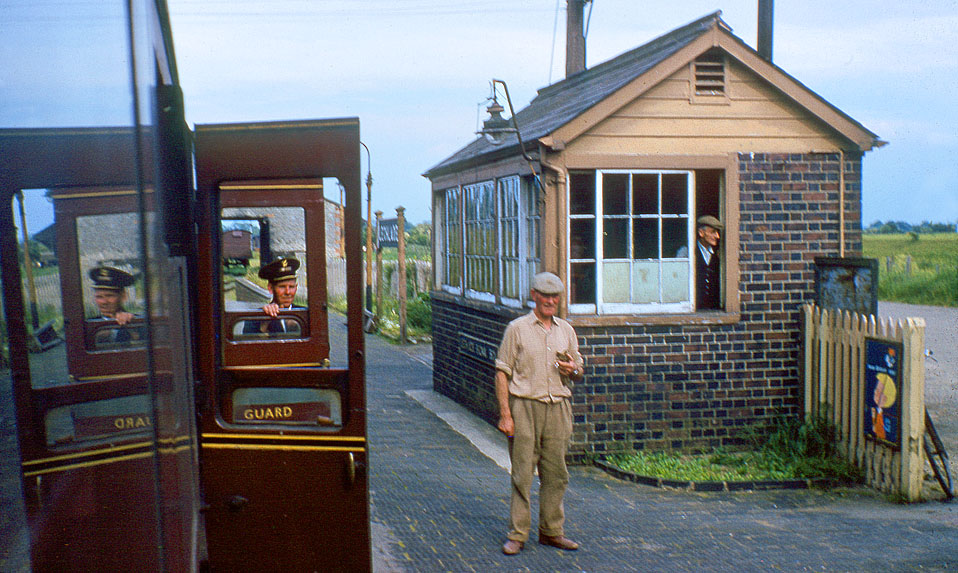 |
|
Another view from the train on the final day of passenger services, this time at Lechlade. Apart fro the signalman, everybody seems to be looking towards the front of the train. I particularly like this picture, with the guard looking through the open window, and also
reflected in the coach side.
Martin Loader Collection
|
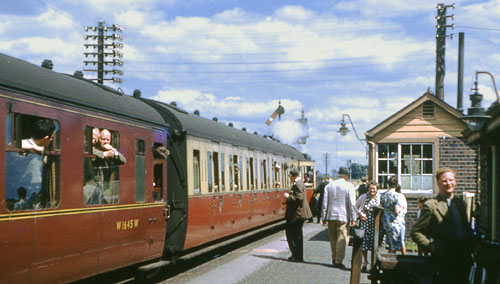 |
Another view of the last day at Lechlade. By 1962 most coaches on mainline Western Region services were either in the then standard maroon (like W1645W on the left), or chocolate and cream liveries. However, on branch lines, crimson lake and cream
vehicles could still be seen.
John Strange
|
|
|
|
|
If only the trains had been this busy on a normal day! Crowds swarm over Fairford station on the last day of passenger services - 12 June 1962. I was there, but even with careful
inspection of the original photograph I cannot see myself in the crowd! My father, brother and myself made the journey from Carterton to Fairford and return.
Colin Moulden Collection |
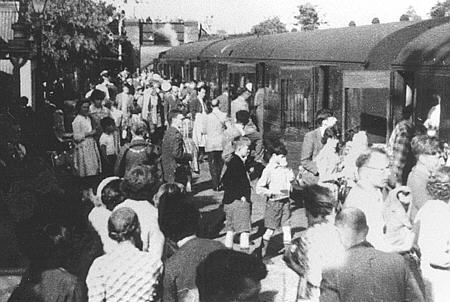
|
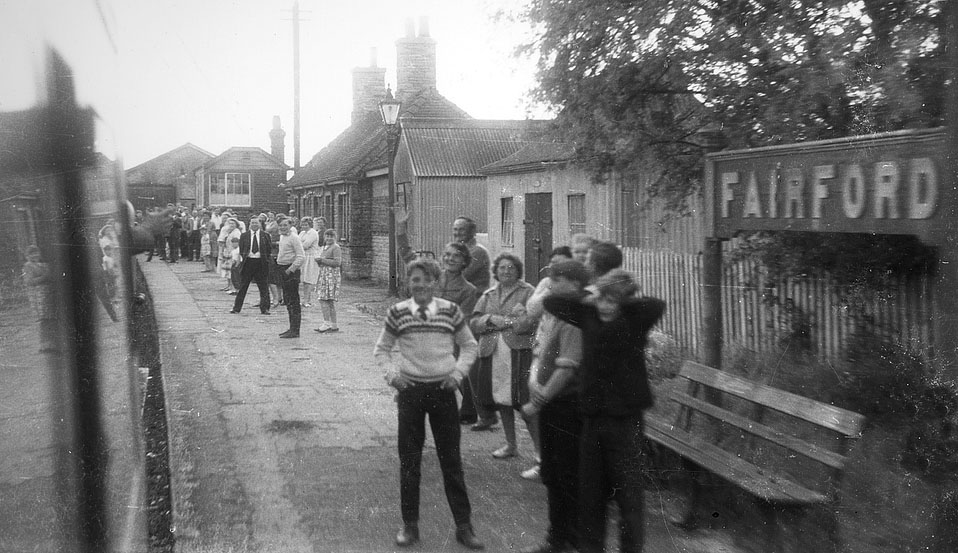 |
|
A final view of the crowds at Fairford, taking from the departing train. After all the excitement, the station would slip into obscurity, with only the occasional interested visitor exploring its increasingly overgrown platforms and buildings.
Martin Loader Collection
|
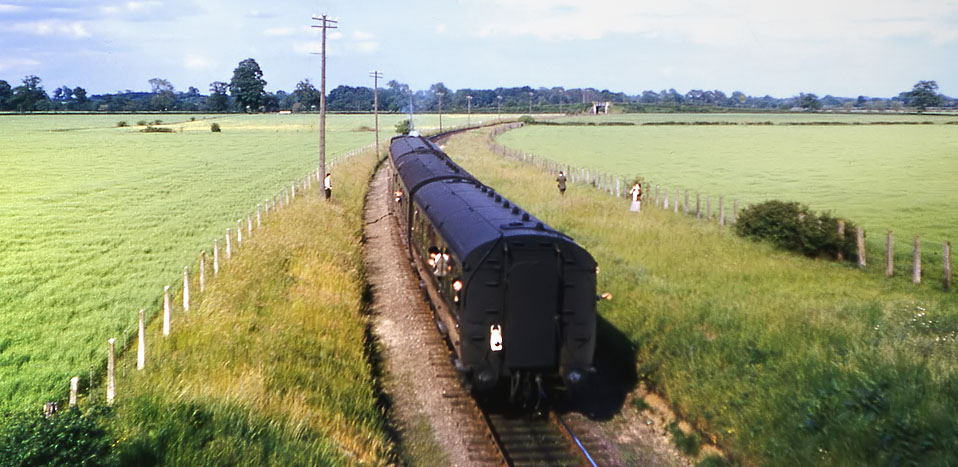 |
|
The end - literally! It is the evening of Saturday 16 June 1962, and a packed last train leaves Fairford for Oxford. Photographers stand on the grassy banks to get their photos, as the train heads off into history. In the background is the bridge (which still
survives)
on the Whelford to Southrop road.
John Strange
|
|